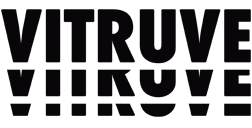10 de June de 2025
How to build high school strength and conditioning programs
Designing effective high school strength and conditioning programs requires more than just writing workouts. It involves long-term athletic development (LTAD), clear progression models, collaboration between coaches and educators, and integration with the academic schedule. Whether you’re a PE teacher, strength coach, or athletic director, this guide will help you build a high school S&C program that develops strong, resilient, and well-rounded athletes.
Why High School Strength and Conditioning Matters
High school is a critical window for athletic development. Students are still maturing physically and neurologically, which makes them highly responsive to well-structured training. A solid program can:
- Improve movement mechanics and motor control
- Reduce the risk of sports-related injuries
- Build foundational strength, speed, and power
- Prepare students for collegiate athletics
- Enhance confidence and discipline
Step 1: Establish the Framework of Your Program
Before programming exercises, define your core objectives:
- Is the program open to all students or just athletes?
- Will training happen during school hours or after class?
- What are the available facilities, equipment, and staff?
Create a mission for your program rooted in long-term athletic development. Consider building 3–4 annual training blocks:
- Introductory Phase: General physical prep, motor control, movement education
- Development Phase: Introduce resistance, tempo control, technical skill work
- Performance Phase: Increase intensity and apply sport-specific adaptations
- Maintenance Phase: Adjust volume/intensity during competitive seasons
Step 2: Teach Movement Quality First
All high school strength and conditioning programs must begin with movement fundamentals:
- Bodyweight squats, hip hinges, push-ups, pull-aparts, planks, and carries
- Teach proper bracing, breathing, and posture
- Prioritize mobility and activation drills before each session
You’re not just training muscles—you’re training patterns. Until those patterns are consistent, avoid progressing to heavy loading.
Step 3: Integrate Foundational Strength Training
Once students demonstrate good mechanics, introduce basic resistance:
- Goblet squats, trap bar deadlifts, dumbbell presses, rows, banded pull-aparts
- Use a full-body training split 2–3x/week
- Focus on moderate volume (3–4 sets of 8–12 reps)
Track lifts using estimated 1RMs or bar speed. For programs that want to push further, implement Velocity-Based Training (VBT) to guide intensity.
Explore our tools: VBT Devices for High School S&C
Step 4: Plan Conditioning and Athletic Development
Conditioning should not just be “running laps.” It should include:
- Sprint mechanics, acceleration drills, and change-of-direction work
- Med ball throws and jumps to build power
- Circuit-based aerobic development on non-lifting days
- Active recovery and mobility-focused sessions
Adjust work:rest ratios based on sport seasons and training goals.
Step 5: Build a Long-Term Progression Model
Avoid max testing early on. Instead, progress students over weeks:
- Teach tempo: 3-1-1 eccentric phases help ingrain control
- Introduce load gradually (5–10% increases weekly)
- Use repetition max sets, technical failure, or bar speed thresholds
Use Velocity Based Training to monitor individual fatigue and intent, especially for athletes in-season.
Step 6: Incorporate Tracking and Accountability
Even at the high school level, data builds engagement:
- Use whiteboards, notebooks, or digital apps to track sets and loads
- Set weekly challenges (most improved, best technique, etc.)
- The Vitruve App allows real-time feedback, load profiling and includes leaderboards to track and compare performance.
Accountability leads to effort. Effort drives progress.
Step 7: Coordinate with Sport Coaches
Many programs fail because strength training is siloed. Meet regularly with sport coaches:
- Align schedules to avoid overlap or overtraining
- Adjust sessions during playoffs or heavy game weeks
- Use shared athlete data to make informed decisions
Make your S&C program an integrated pillar of athletic success, not a separate entity.
Sample Weekly Template for High School S&C
| Day | Focus |
|---|---|
| Monday | Strength + Power |
| Tuesday | Conditioning + Mobility |
| Wednesday | Full-Body Strength |
| Thursday | Speed + Athletic Movement |
| Friday | High Rep Recovery Circuit |
Modify volume and intensity per season and athlete readiness.
Final Tips for Coaches
- Always lead with education. Teach athletes the “why”
- Train movement before muscle
- Prioritize consistency over complexity
- Include rest and nutrition discussions
- Create a culture of development, not just competition
Related Resources for Coaches
Looking to tailor your program further? Explore our sport-specific S&C guides:
- Soccer S&C Program
- Baseball S&C Program
- Tactical S&C Program
- Running S&C Program
- Swimming S&C Program
- Golf S&C Program
Conclusion
Great high school strength and conditioning programs develop lifelong athletes. With a clear framework, educated coaching, and smart use of technology like Vitruve’s VBT device and app, you can guide students through safe, progressive, and effective training—whether they go on to compete in college or simply lead stronger lives.
Learn more about program design in our guide: Strength and Conditioning Principles
